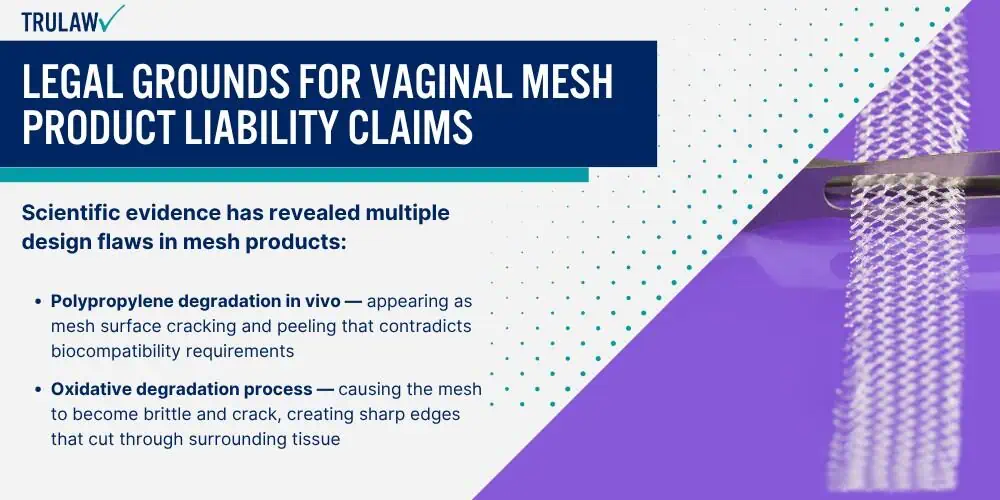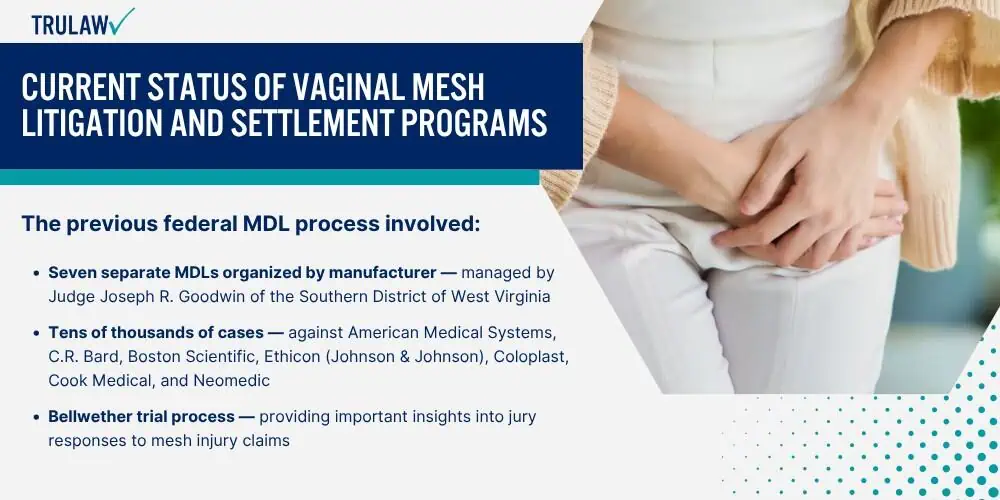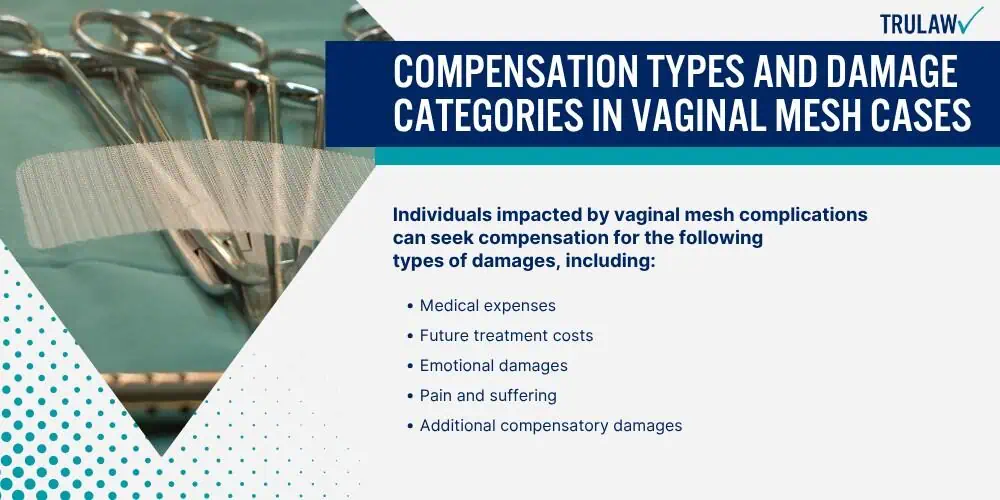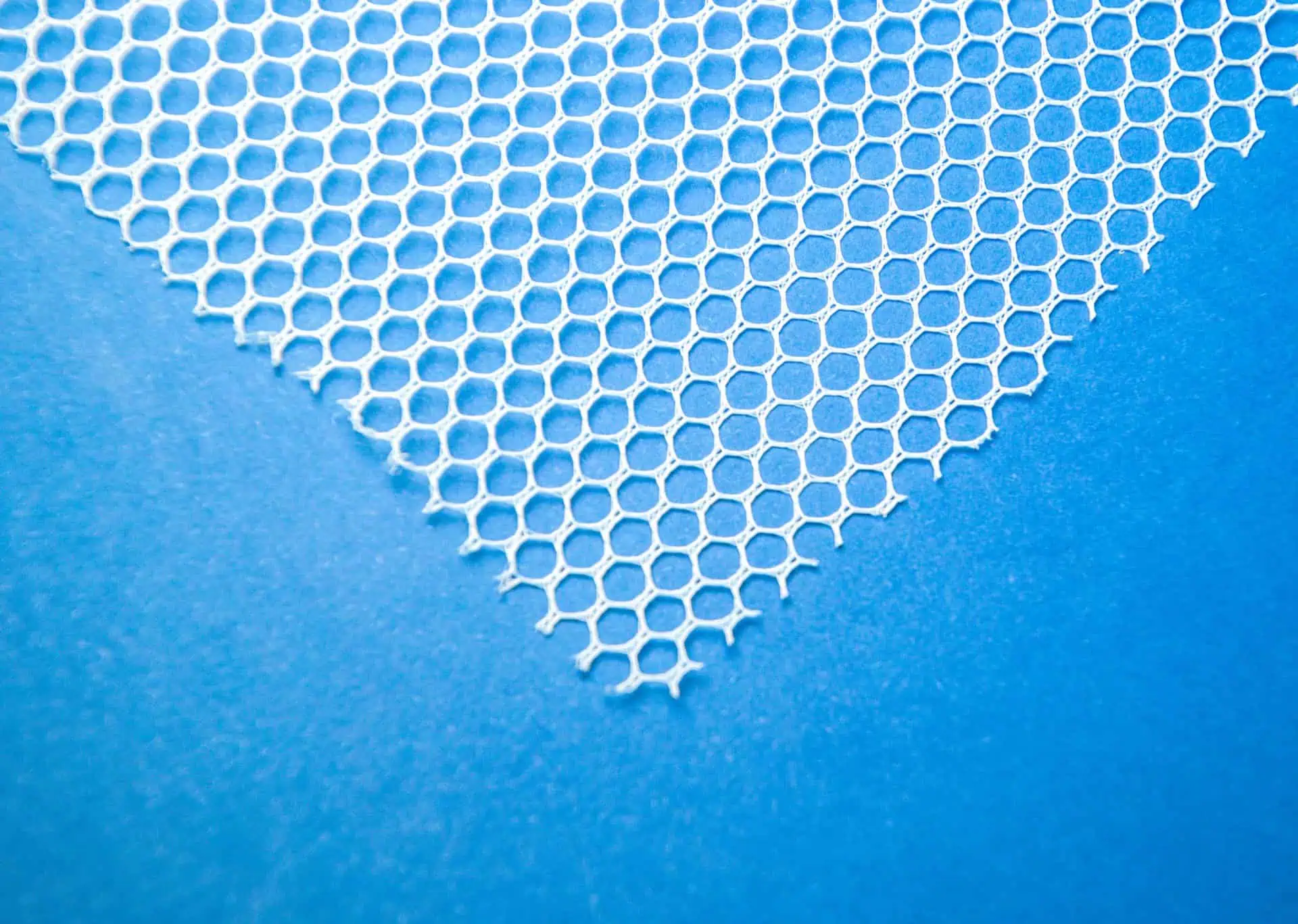Multiple manufacturers have faced legal scrutiny for their mesh products, with each company producing various models that have caused widespread complications.
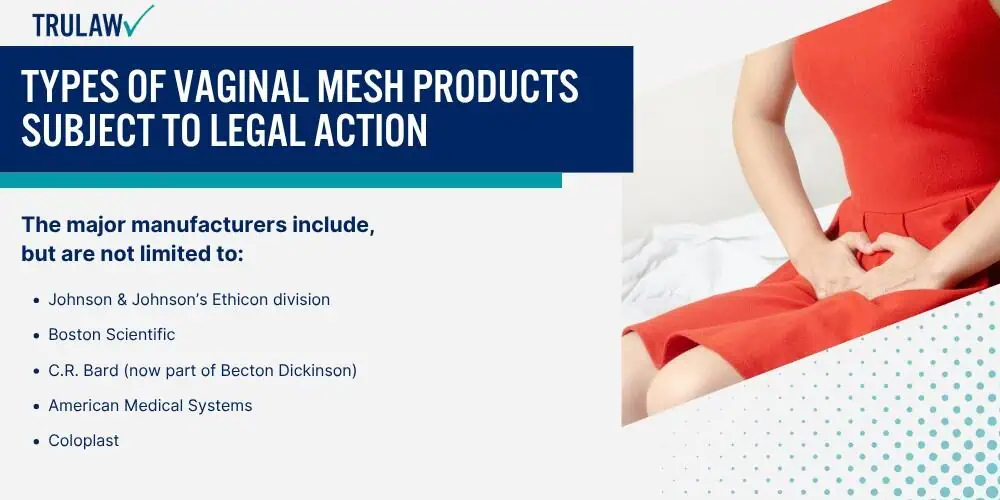
The major manufacturers include, but are not limited to:
- Johnson & Johnson’s Ethicon division
- Boston Scientific
- C.R. Bard (now part of Becton Dickinson)
- American Medical Systems (acquired by Endo Pharmaceuticals)
- Coloplast
Some of the specific products involved in litigation include, but are not limited to:
- Boston Scientific:
- Pinnacle Pelvic Floor Repair Kit
- Uphold Vaginal Support System
- Advantage
- Obtryx Slings
- C.R. Bard:
- Avaulta Solo
- Avaulta Plus
- Align Urethral Support System
- Pelvilace Support Systems
- Uretex Urethral Support Systems
These mesh products fall into distinct categories based on their intended use.
Transvaginal mesh kits were designed for pelvic organ prolapse repair and included pre-cut mesh pieces with specialized tools for placement through the vaginal wall.
Mid-urethral slings (primarily used to treat stress urinary incontinence) are implanted by placing a narrow strip of mesh beneath the urethra.
The FDA continues to assess the safety and effectiveness of urogynecologic surgical mesh devices.
Many of these products received FDA clearance through the 510(k) process, which allowed manufacturers to bypass rigorous clinical trials by claiming their devices were substantially equivalent to products already on the market.
Common Complications That May Qualify for Legal Claims
Women implanted with vaginal mesh have reported a devastating array of complications that often emerge months or years after their initial surgery.
Some early studies reported erosion rates as high as 24%.
The most frequently reported complications include:
- Mesh erosion through the vaginal wall — where the synthetic material literally wears through surrounding tissue and neighboring tissues are worn from the rubbing of mesh, occurring in a notable number of cases
- Chronic pelvic pain — often debilitating and resistant to treatment
- Painful intercourse (dyspareunia) — destroying intimate relationships and causing psychological distress
- Recurrent urinary tract infections — as bacteria colonize the porous mesh material
- Vaginal scarring and shrinkage — affecting normal function and comfort
- Organ perforation — particularly of the bladder or bowel
- Abnormal bleeding — disrupting normal menstrual cycles and daily life
- Nerve damage — causing numbness or hypersensitivity
- Need for multiple revision surgeries — requiring additional procedures to address failures
Pain and exposure are the two most reported complications associated with the use of polypropylene mesh in urogynecologic procedures.
Medical Documentation Requirements for Your Case
Building a strong vaginal mesh claim requires comprehensive medical documentation that establishes both the implantation of mesh and resulting complications.
Key medical records needed for your case include:
- Original surgical report — detailing the specific mesh product used, the manufacturer’s name, and the lot numbers
- Pre-operative consent forms — helping demonstrate what risks were disclosed versus what complications occurred
- Post-operative care notes — tracking the development of symptoms to create a timeline linking mesh implantation to injuries
- Diagnostic imaging records — CT scans, MRIs, and ultrasounds that can reveal mesh migration, erosion into surrounding organs, or inflammatory responses
- Revision or removal surgery records — providing powerful evidence of mesh failure, particularly operative reports that describe the condition of the explanted mesh, the extent of tissue damage, and surgical photographs
- Ongoing treatment documentation — including pain management records, physical therapy notes, and psychological counseling for mesh-related distress
- Pathology reports — examining removed mesh and surrounding tissue, often revealing degradation of the polypropylene material and chronic inflammatory responses that support product defect claims
Diagnostic imaging plays a key role in documenting mesh-related problems.
Using a laparoscope or DaVinci robot, the surgeon enters the abdomen via five small incisions and inserts a mesh or tissue-based strip to hold the pelvic organs or vagina in place.
Records from revision or removal surgeries provide powerful evidence of mesh failure – particularly operative reports that describe the condition of the explanted mesh, the extent of tissue damage, and surgical photographs.
Ongoing treatment documentation helps establish the full scope of damages, while pathology reports examining removed mesh and surrounding tissue often reveal degradation of the polypropylene material and chronic inflammatory responses that support product defect claims.

